ELAR 1.2
Developing and sustaining foundational language skills: listening, speaking, reading, writing, and thinking--beginning reading and writing. The student develops word structure knowledge through phonological awareness, print concepts, phonics, and morphology to communicate, decode, and spell. The student is expected to:
- (1) demonstrate phonological awareness by:
- (A) producing a series of rhyming words;
- (i) recognizing spoken alliteration or groups of words that begin with the same spoken onset or initial sound;
- (ii) distinguishing between long and short vowel sounds in one-syllable words;
- (iii) recognizing the change in spoken word when a specified phoneme is added, changed, or removed;
- (iv) blending spoken phonemes to form one-syllable words, including initial and/or final consonant blends;
- (v) manipulating phonemes within base words; and
- (vi) segmenting spoken one-syllable words of three to five phonemes into individual phonemes, including words with initial and/or final consonant blends;
- (vii) demonstrate and apply phonetic knowledge by:
- (B) decoding words in isolation and in context by applying
common letter sound correspondences;
- (i) decoding words with initial and final consonant blends, digraphs, and trigraphs;
- (ii) decoding words with closed syllables; open syllables; VCe syllables; vowel teams, including vowel digraphs and diphthongs; and r-controlled syllables;
- (iii) using knowledge of base words to decode common compound words and contractions;
- (iv) decoding words with inflectional endings, including -ed, -s, and -es; and
- (v) identifying and reading at least 100 high-frequency words from a research-based list;
- (vi) demonstrate and apply spelling knowledge by:
- (C) spelling words with closed syllables, open syllables,
VCe syllables, vowel teams, and r-controlled syllables;
- (i) spelling words with initial and final consonant blends, digraphs, and trigraphs;
- (ii) spelling words using sound-spelling patterns; and
- (iii) spelling high-frequency words from a research-based list;
- (iv) demonstrate print awareness by identifying the information that different parts of a book provide;
- (D) alphabetize a series of words to the first or second letter and use a dictionary to find words; and
- (E) develop handwriting by printing words, sentences, and answers legibly leaving appropriate spaces between words.
- (A) producing a series of rhyming words;
- Plus Plan
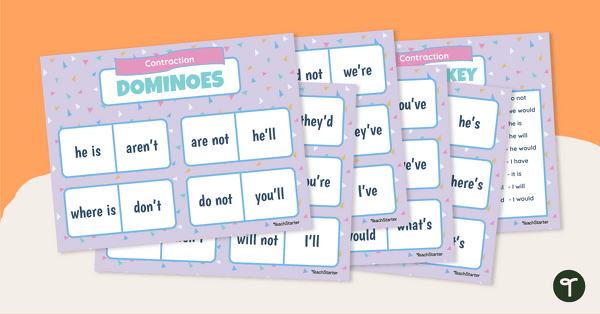
Contractions Dominoes
Build vocabulary and spelling skills and have fun with contraction word games.
- Plus Plan
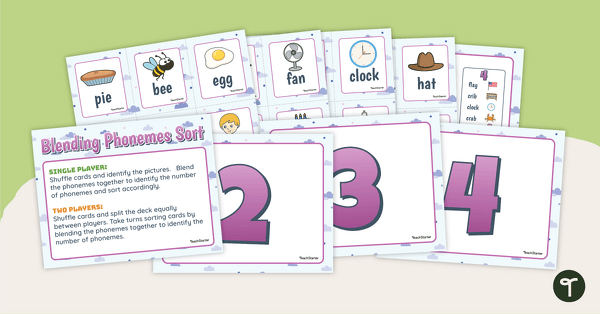
Blending Phonemes Sorting Center
Master phoneme blending and segmentation with this phoneme sorting center activity.
- Plus Plan
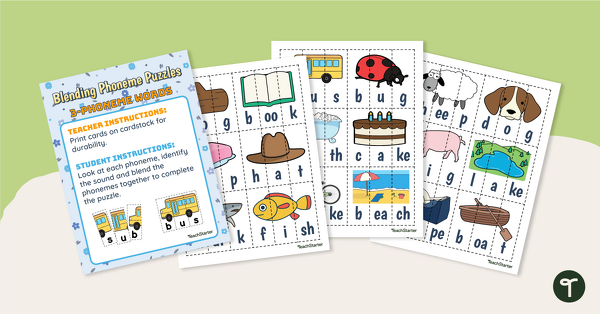
Blending Phoneme Puzzles — 3-Phoneme Words
Master blending phonemes with phoneme blending puzzles as a reading center activity.
- Plus Plan
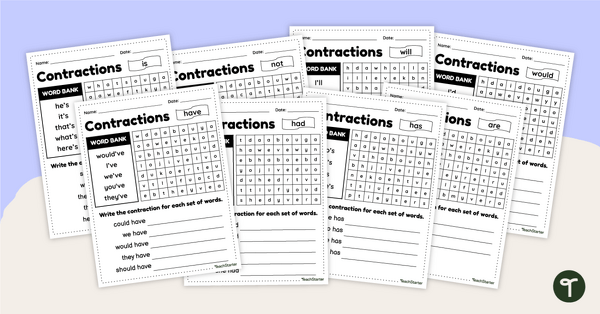
Contractions Practice Worksheets
Reinforce the concept of contractions with eight worksheets designed for primary learners.
- Plus Plan
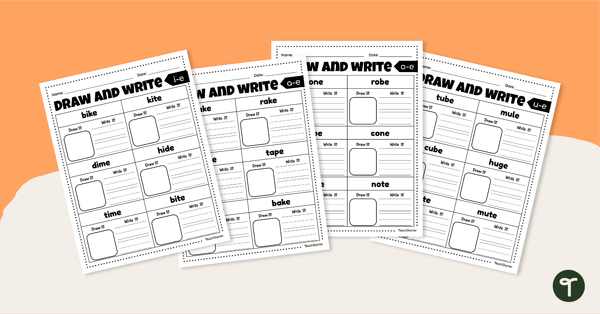
Draw and Write Final E Worksheet Pack
Provide extra practice reading, spelling, and writing final-e words with Draw and Write Worksheets.
- Plus Plan
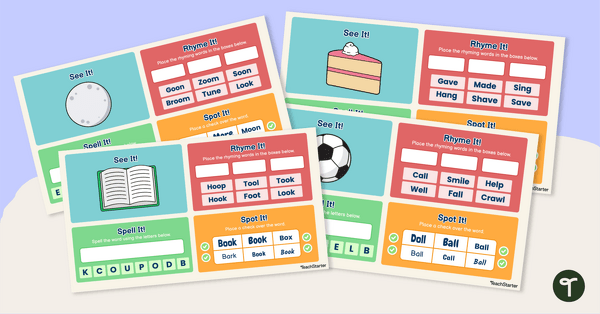
Google Interactive Activity- Reading, Spelling, and Rhyming Word Families
Build skill with word families, rhyming words, and more with a Google Slides Interactive Word Family Activity.
- Plus Plan
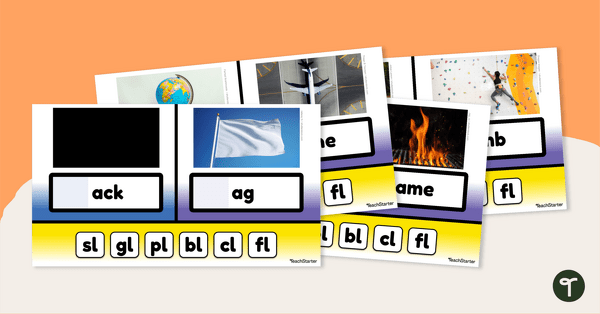
Google Interactive L-Blends Word Building Activity
Engage young readers to tackle L-blend words with an engaging and inviting Google Interactive activity.
- Plus Plan
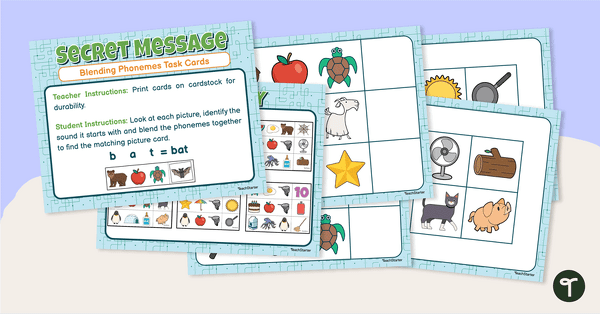
Blending Phonemes Secret Message-Matching Activity
Blend phonemes to build words and uncover the secret message!
- Plus Plan
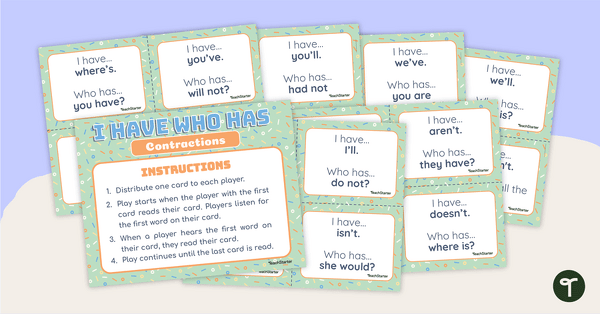
Contractions - I Have, Who Has? Card Game
Encourage correct spelling and usage of contractions in your Language Arts lessons with an engaging I Have, Who Has? Card game.
- Plus Plan
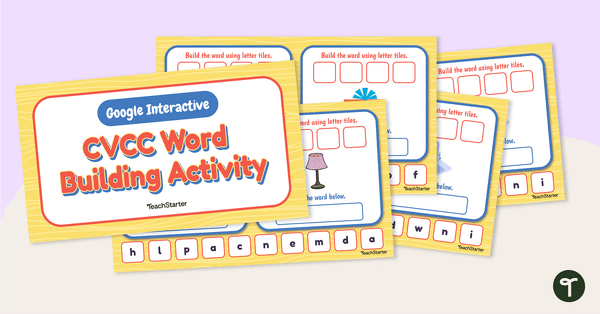
Google Interactive CVCC Word Building Activity
Practice building, reading, and writing words with consonants, vowels, blends, and digraphs while spelling CVCC words.
- Plus Plan
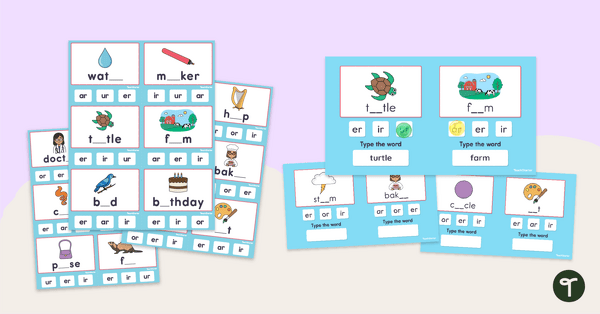
R-Controlled Vowel Clip Cards-Digital and Print
Build an engaging literacy center or station activity around r-controlled vowels with these digital and/or printable r-controlled vowel clip cards.
- Plus Plan
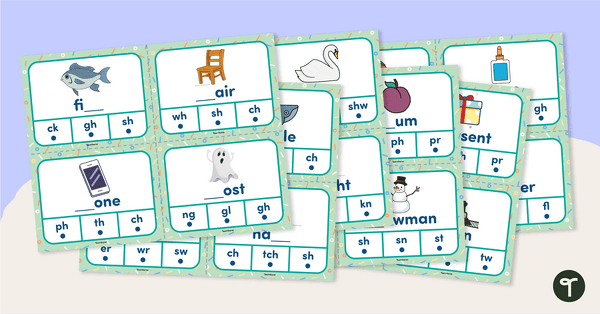
Blends and Digraphs Clip Card Reading Center
Practice identifying digraphs and blends in word through interactive Google slides and traditional PDF printable formats.
- Plus Plan
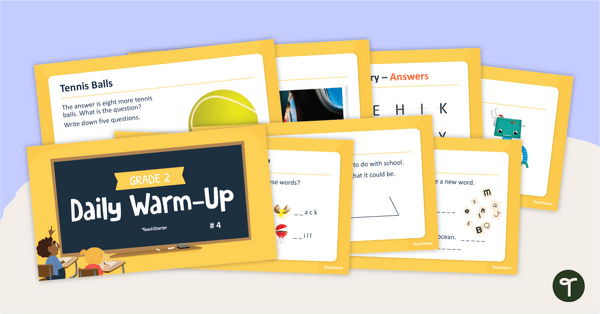
Grade 2 Daily Warm-Up - PowerPoint 4
Warm-up your students' brains each day with this 68-slide PowerPoint containing a variety of quick activities.
- Plus Plan
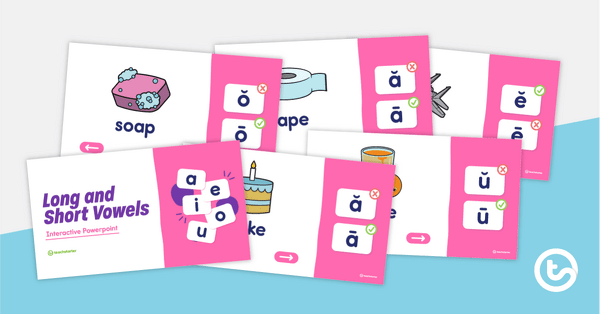
Differentiating Long and Short Vowels - Interactive PowerPoint
Practice differentiating between long and short vowel sounds with this interactive PowerPoint.
- Plus Plan
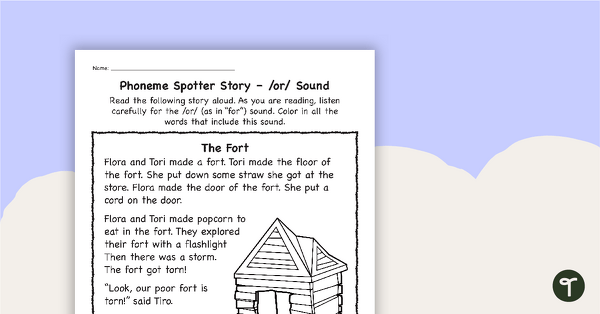
Phoneme Spotter Story – /or/ Sound
A decodable text featuring various graphemes that make the /or/ sound.
- Plus Plan

Match or TRASH! - R Blends Card Game
Practice decoding and reading 15 initial R blend words with our matching card game.
- Plus Plan
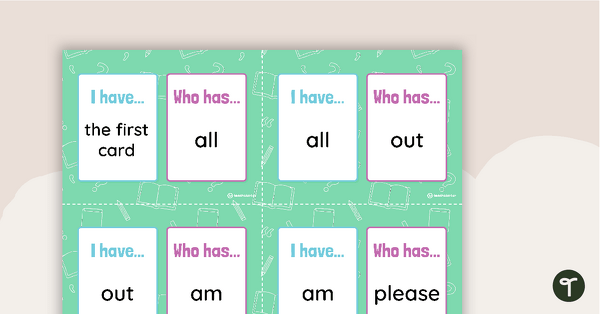
I Have, Who Has? Game - Dolch Primer Sight Words
Practice listening to and reading high-frequency words with this set of 53 “I Have, Who Has” Kindergarten Dolch sight word game cards.
- Plus Plan

First Grade Dolch Words - I Have, Who Has? Game
Practice listening to and reading high-frequency words with this set of 42 “I Have, Who Has?” 1st Grade Dolch sight word game cards.
- Plus Plan
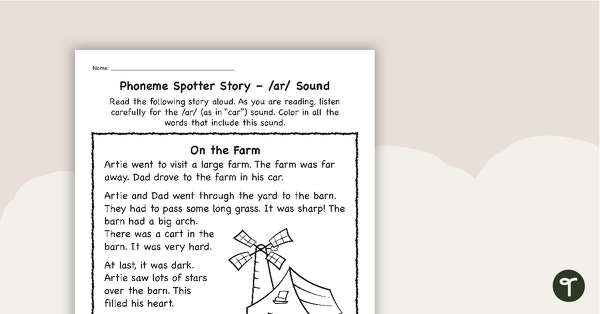
Phoneme Spotter Story – /ar/ Sound
A decodable text featuring various graphemes that make the /ar/ sound.
- Plus Plan
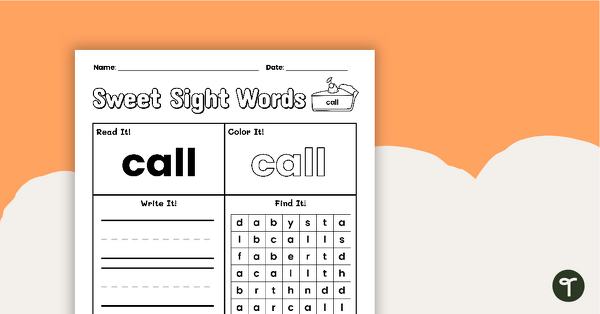
Sweet Sight Words Worksheet - CALL
Practice reading, writing, and identifying the high-frequency word “call” from the Second Grade Dolch sight words list.
- Plus Plan
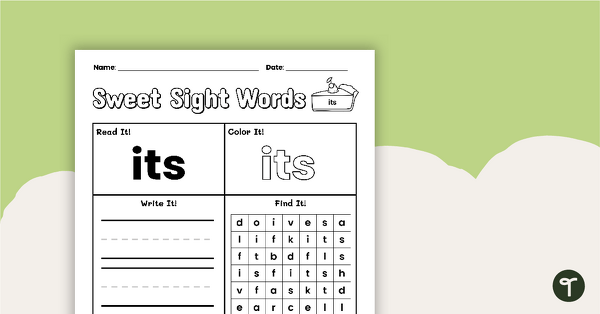
Sweet Sight Words Worksheet - ITS
Practice reading, writing, and identifying the high-frequency word “its” from the Second Grade Dolch sight words list.
- Plus Plan
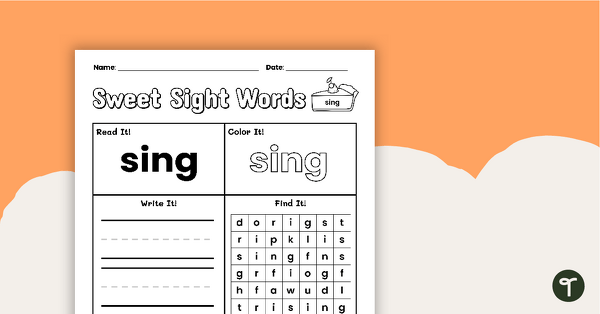
Sweet Sight Words Worksheet - SING
Practice reading, writing, and identifying the high-frequency word “sing” from the Second Grade Dolch sight words list.
- Plus Plan
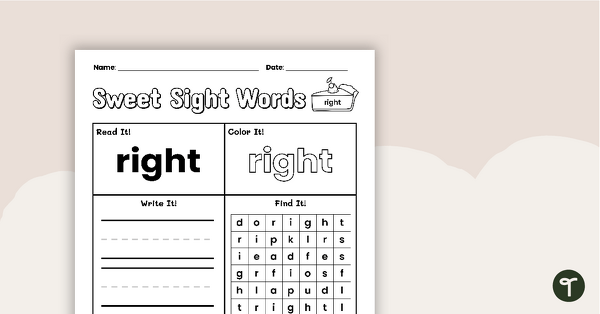
Sweet Sight Words Worksheet - RIGHT
Practice reading, writing, and identifying the high-frequency word “right” from the Second Grade Dolch sight words list.
- Plus Plan
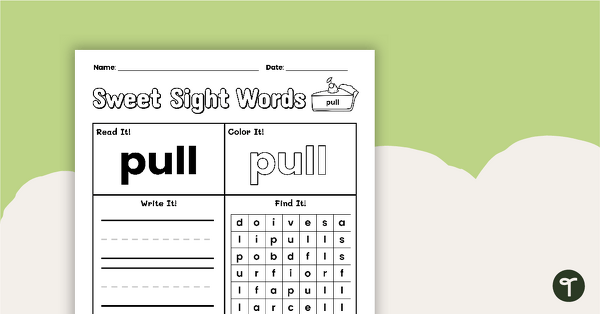
Sweet Sight Words Worksheet - PULL
Practice reading, writing, and identifying the high-frequency word “pull” from the Second Grade Dolch sight words list.
- Plus Plan
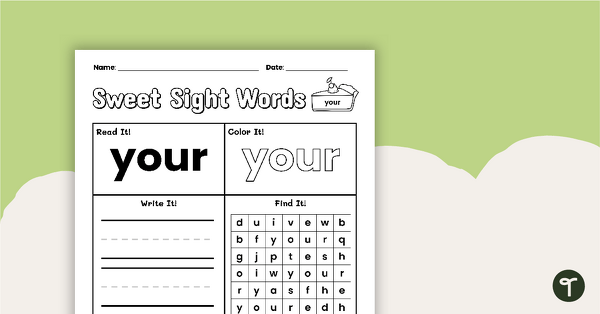
Sweet Sight Words Worksheet - YOUR
Practice reading, writing, and identifying the high-frequency word “your” from the Second Grade Dolch sight words list.
- Plus Plan
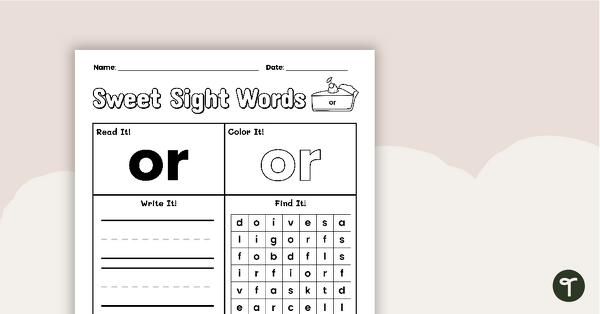
Sweet Sight Words Worksheet - OR
Practice reading, writing, and identifying the high-frequency word “or” from the Second Grade Dolch sight words list.
- Plus Plan

Sweet Sight Words Worksheet - WISH
Practice reading, writing, and identifying the high-frequency word “wish” from the Second Grade Dolch sight words list.
- Plus Plan
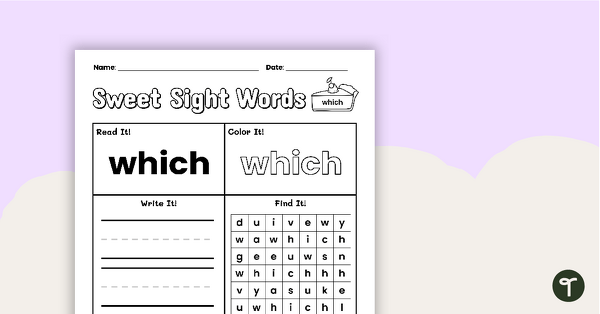
Sweet Sight Words Worksheet - WHICH
Practice reading, writing, and identifying the high-frequency word “which” from the Second Grade Dolch sight words list.
- Plus Plan
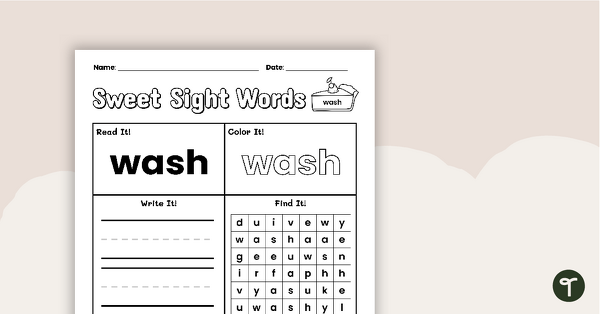
Sweet Sight Words Worksheet - WASH
Practice reading, writing, and identifying the high-frequency word “wash” from the Second Grade Dolch sight words list.
- Plus Plan
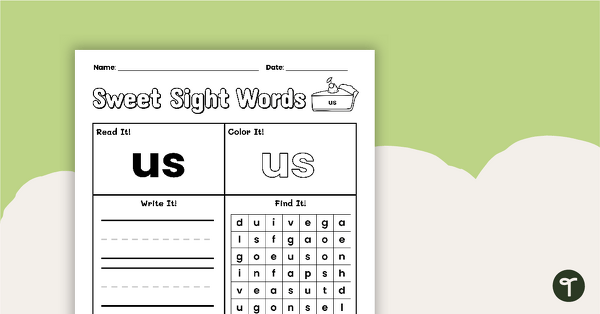
Sweet Sight Words Worksheet - US
Practice reading, writing, and identifying the high-frequency word “us” from the Second Grade Dolch sight words list.
- Plus Plan
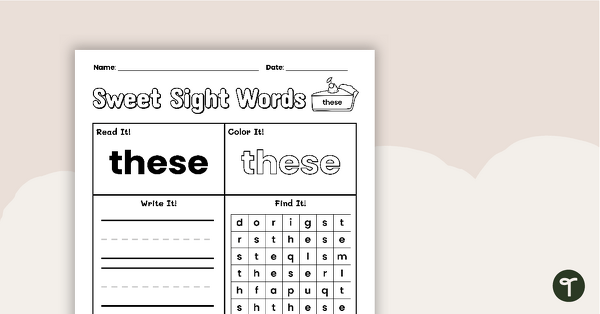
Sweet Sight Words Worksheet - THESE
Practice reading, writing, and identifying the high-frequency word “these” from the Second Grade Dolch sight words list.
- Plus Plan
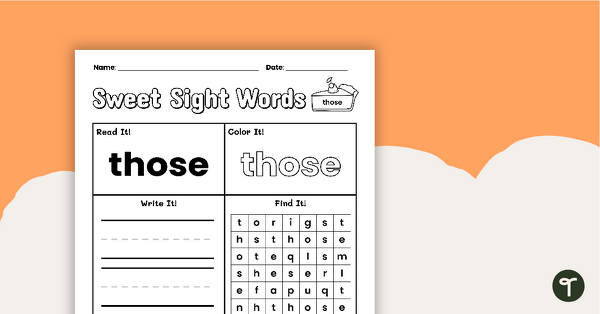
Sweet Sight Words Worksheet - THOSE
Practice reading, writing, and identifying the high-frequency word “those” from the Second Grade Dolch sight words list.